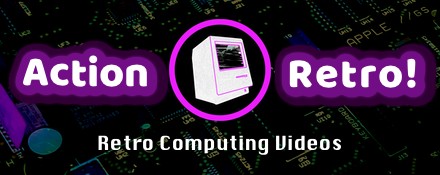The Museum (salizzer) Mac OS
This means you will need a late 2015 iMac 27-inch or newer, 2016 MacBook Pro or newer, 2018 Mac Mini, 2019 Mac Pro, 2018 MacBook Air, or an early 2016 MacBook or newer model computer. Next: Classic Mac OS. See our illustrated design evolution of classic Mac OS from 1984 to 2001, showing the timeline of System 1 to System 9. Also, if you're an Apple fan, see our article on what Apple.com used to look like - 25 years of design history of the Apple.com website. Mac OS from Catalina onward will only run 64-bit applications. My recollection of CS5 Illustrator was that it was only 32-bit.
Design, 3D-print and assemble a small arcade machine.
Design, 3D-print and assemble several small computers.
Interactive audio guide and several interactive installations for the Hyde Park Barracks Museum in Sydney, Australia.
End user software to create on-brand particle-based transitions between video clips, with automated motion tracking.
Several Interactive instellations for the ARoS Public floor at the ARoS Art Museum in Aarhus, Denmark.
While working at Local Projects, developed software to drive the BioPool at the BioDesign Studio exhibit at The Tech Museum.
Develop and lead a team of developers in the making of the Interactive Tables at the Cooper Hewitt, Smithsonian Design Museum in New York.
Interactive Media Wall for Case Western Reserve University in Cleveland, Ohio.
Worked during the initial phase of the development of the Kinetic sculpture during my stay at art+com.
Created a platform to drive the interaction for the “Benetton Live Windows”, during my stay at Fabrica.
Interactive installation with Andy Cameron showcased at the Decode show, at the Victoria and Albert Museum of London.
Developed the Mac OS X version of Ommwriter for Herraiz Soto.
Camera based installation for Snibbe Interactive, currently installed at the Nemo Science Museum in Amsterdam.
Visuals for Richie Hawtin & Co. together with Ali Demirel, at Sonar 2008.

Interactive floor installation for Snibbe Interactive, currently installed at California Academy of Sciences, in San Francisco.
The Museum (salizzer) Mac Os Catalina
Interactive installation within the “Remote/Control” Interactive and Multimedia Art Show at Moca Shanghai.
Fabrica Exhibit at the Triad New Media Gallery, in Seoul, Korea.
Custom software to be performed live during “Surrogate Cities”, an Opera by Heiner Goebbels at Teatro La Fenice” in Venice, Italy.
The Museum (salizzer) Mac Os 7
Fish is an aquarium simulator for Mac OS X. This was my final thesis at La Salle University.